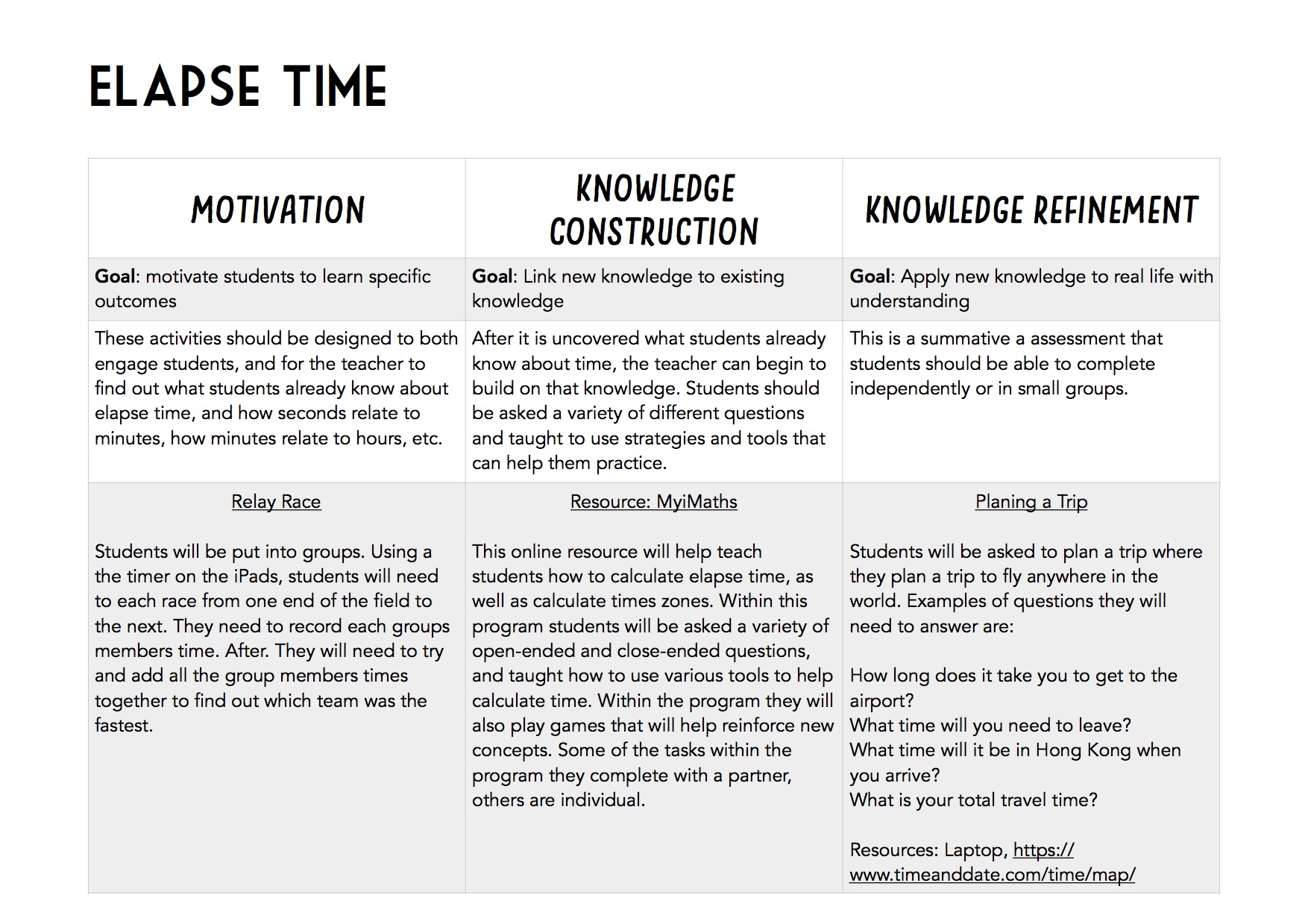I really appreciate the features of the LfU framework. LfU is a model that teachers at any level can adapt and work onto an inquiry enriched context. One aspect I think all teachers would enjoy is that it is broken up into three sections. You often see frameworks and models that are multilayered, but LfU managed to embed and include essential features of multiple teaching and learning theories into three parts which makes it a manageable user-friendly model. By adopting this type of framework, teachers can ensure that students aren’t merely memorizing facts but instead building knowledge through activities that foster conceptual understandings. Learners can then apply what they are learning in their real life (Edelson, 2000). Furthermore, the framework also lends itself nicely to technology integration. By adding this layer allows learners to work on their spatial literacy. The advantage to this is that students will be able to “manage, visualize, and interpret information” which Perkins et al. (2010) describe as something that will be necessary for employees in our future workforce.
One concept that my Grade three students often struggle with is the concept of time and specifically elapsed time. Time is one of shape and space outcomes that I see as being one that is most applicable to real life, but often not a lot of time (ironically) is spent on it in school. This is why I chose this outcome. Below is a table that I created and included an activity for each section of the LfU model. One crucial aspect that is not on this table is ‘reflection.’ While I haven’t covered it here, I think it is one that is of utmost importance in any subject. One activity I might have my students do is repeat the motivation activity and have them reflect on how their knowledge improved and what strategies and tools they used the first time and what ones they used the second time.

Edelson, D.C. (2001). Learning-for-use: A framework for the design of technology-supported inquiry activities. Journal of Research in Science Teaching,38(3), 355-385
Perkins, N., Hazelton, E., Erickson, J., & Allan, W. (2010). Place-based education and geographic information systems: Enhancing the spatial awareness of middle school students in Maine. Journal of Geography, 109(5), 213-218.
Hi Sarah
I like the fact that you brought up time. I do not remember where this saying comes from “I waste time and now time wastes me”. I also, like your example of time. The lesson you presented can be expanded to include graphs and calculating velocity and acceleration — maybe for older students.
I wonder if at that age the students can calculate the time to get to the airport? What about lights or traffic?
A good next step might create an alternative knowledge refinement — not all students can travel. Maybe have the students can help organize a field trip.
Christopher
Hi Christopher,
It was my thinking that the students would just use GoogleMaps to calculate how long it would take them to travel to the airport. You’re right, most would not be able to consider things like traffic etc.
Also, I like the idea of having students plan and organizing a field trip. This is also something that you could extend and actually follow through with, with enough parent volunteers.
Thanks for your comments!
Sarah